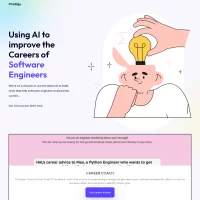Stay Ahead of the Curve
Latest AI news, expert analysis, bold opinions, and key trends — delivered to your inbox.
Forget Coding — MIT’s AI Is Now Creating Quantum Materials
3 min read MIT’s AI just invented quantum materials humans couldn’t dream up — and scientists built them in the lab. Quantum computing, superconductors, the future of matter itself… this is where AI is heading. September 25, 2025 17:39
We’ve seen AI write code, paint portraits, even compose music. But MIT just nudged things into sci-fi territory: AI is now designing quantum materials — and scientists are building them for real.
The tool is called SCIGEN. Instead of spitting out the usual “safe” stable compounds, it’s trained with the deep rules of geometry and physics — think exotic lattice structures that are tied to quantum effects. That nudge turned AI from a random guesser into a targeted inventor.
The results? SCIGEN generated over 10 million candidate materials, filtered for stability, and after a round of simulations and lab tests, researchers actually synthesized two never-before-seen compounds. Their properties matched what the AI predicted.
This matters because the hunt for exotic materials is a bottleneck in fields like quantum computing, superconductivity, and topological devices. One wrong guess can waste months. But here, AI isn’t just suggesting — it’s accelerating discovery.
The catch: while AI throws up endless ideas, only a tiny fraction make sense in reality. And the hard validation work still happens in the lab, not the model. But what used to feel like “needle in a haystack” hunting is now more like guided exploration.
Big picture? This isn’t AI replacing scientists — it’s AI and physics teaming up. The machine dreams up the blueprint, humans test it, and together they bend matter into something the universe has never seen before.



















 AI Agents
AI Agents